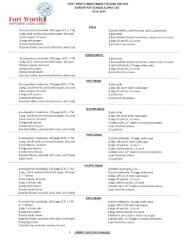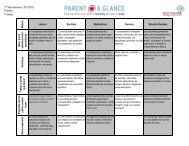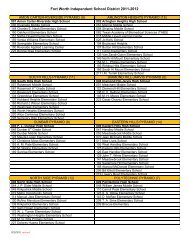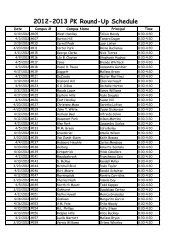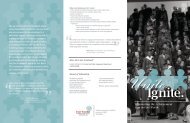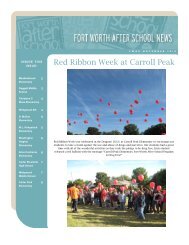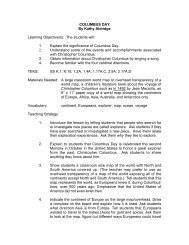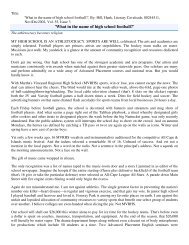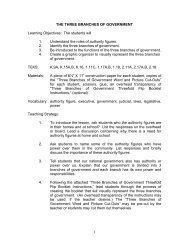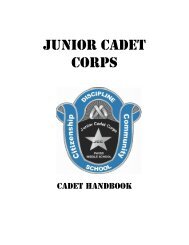Bulletin One 2012 2013 Final.pdf - Fort Worth ISD
Bulletin One 2012 2013 Final.pdf - Fort Worth ISD
Bulletin One 2012 2013 Final.pdf - Fort Worth ISD
Create successful ePaper yourself
Turn your PDF publications into a flip-book with our unique Google optimized e-Paper software.
heat injuries.<br />
D. Children who are medically fragile, those taking antibiotics, antihistamines or medication for<br />
attention deficit disorder are more susceptible to heat injury and extra caution should be taken<br />
with them.<br />
IV. Simple instructions beforehand to the students in their homerooms and P.E. classes can increase<br />
compliance. But make your point, push water and prevent heat injuries.<br />
V. If there is any concern about ensuring each child has consumed appropriate amounts of water,<br />
you may declare these hot days and keep them inside for recess. However, this is not necessary<br />
if the water consumption is carried out properly.<br />
3.15 Guidelines for Ozone Levels<br />
The Dallas/<strong>Fort</strong> <strong>Worth</strong> (DFW) Metroplex, in which FW<strong>ISD</strong> resides, currently does not meet federal clean<br />
air standards for ozone and has been declared non-attainment. The State of Texas has written an air<br />
quality clean up plan known as a State Implementation Plan (S.I.P.). This current plan only meets the<br />
lowest levels of the recommended ozone standards and relies heavily on voluntary pollution reduction<br />
measures. The State, County or City has no policy and current regulations do not required FW<strong>ISD</strong> to<br />
provide a policy. FW<strong>ISD</strong> in no way has any control over the ozone levels within the FW<strong>ISD</strong> or deciding<br />
the level of ozone concerns. Ozone levels are determined by the National Weather Service. Ozone levels<br />
can change from green to red or purple during a given day. FW<strong>ISD</strong> does not believe it is possible to<br />
establish a policy that provides ozone protection not only for the children but also for adults who are<br />
prone to respiratory ailments. There are too many factors that enter into the equation in determining<br />
whether an individual has any health risks associated with ozone. Therefore, FW<strong>ISD</strong> will require a written<br />
statement from the parent or legal guardian of the student on a daily basis that requests that their child be<br />
allowed to stay in that day. It must be the parent’s or legal guardian’s daily responsibility to determine if<br />
the ozone levels will be harmful to their child.<br />
3.15.I Ozone Warning Policy<br />
A. Ozone days are generally recognized for the DFW Metroplex as falling between May and the<br />
end of October each calendar year. The following recommended actions are for outside<br />
activities.<br />
B. In order to protect the health of students, faculty, and employees, the following protocols for<br />
ozone action and heat advisory days were taken from the Texas Commission on<br />
Environmental Quality ―TCEQ‖.<br />
Parts Per<br />
Billion<br />
(PPB) Level<br />
Zone<br />
Color Designation<br />
of Ozone Warning Action Recommended<br />
Good 0-50 Green The AQI value for your community is between 0 and 50. Air<br />
quality is considered satisfactory, and air pollution poses<br />
little or no risk.<br />
Moderate 51-100 Yellow The AQI for your community is between 51 and 100. Air<br />
quality is acceptable; however, for some pollutants there may<br />
be a moderate concern for a very small number of people.<br />
For example, people who are usually sensitive to ozone may<br />
experience respiratory symptoms.<br />
12-13 SY <strong>Bulletin</strong> Number <strong>One</strong> 57 Revised: 10/9/<strong>2012</strong>





